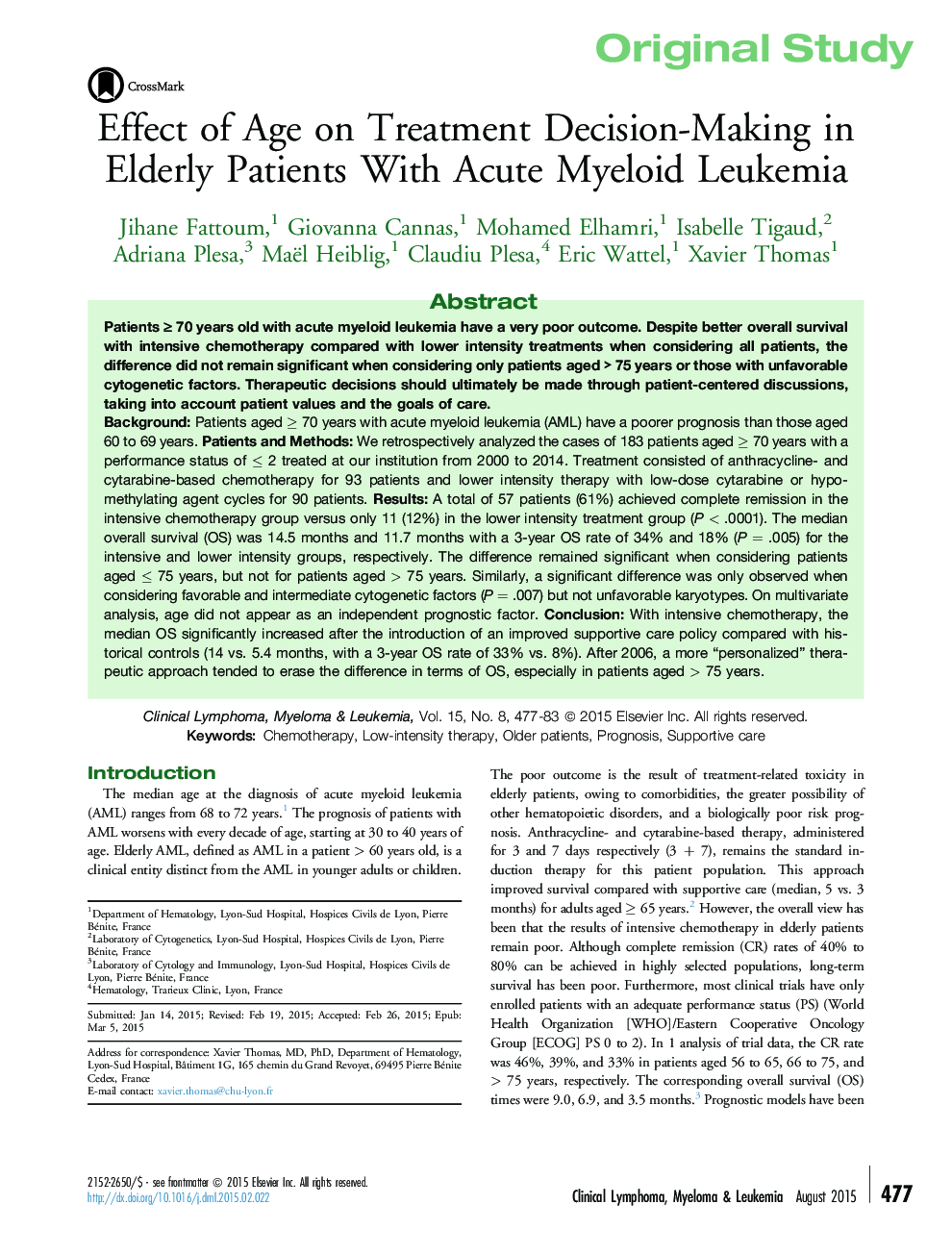| Article ID | Journal | Published Year | Pages | File Type |
|---|---|---|---|---|
| 2754534 | Clinical Lymphoma Myeloma and Leukemia | 2015 | 7 Pages |
BackgroundPatients aged ≥ 70 years with acute myeloid leukemia (AML) have a poorer prognosis than those aged 60 to 69 years.Patients and MethodsWe retrospectively analyzed the cases of 183 patients aged ≥ 70 years with a performance status of ≤ 2 treated at our institution from 2000 to 2014. Treatment consisted of anthracycline- and cytarabine-based chemotherapy for 93 patients and lower intensity therapy with low-dose cytarabine or hypomethylating agent cycles for 90 patients.ResultsA total of 57 patients (61%) achieved complete remission in the intensive chemotherapy group versus only 11 (12%) in the lower intensity treatment group (P < .0001). The median overall survival (OS) was 14.5 months and 11.7 months with a 3-year OS rate of 34% and 18% (P = .005) for the intensive and lower intensity groups, respectively. The difference remained significant when considering patients aged ≤ 75 years, but not for patients aged > 75 years. Similarly, a significant difference was only observed when considering favorable and intermediate cytogenetic factors (P = .007) but not unfavorable karyotypes. On multivariate analysis, age did not appear as an independent prognostic factor.ConclusionWith intensive chemotherapy, the median OS significantly increased after the introduction of an improved supportive care policy compared with historical controls (14 vs. 5.4 months, with a 3-year OS rate of 33% vs. 8%). After 2006, a more “personalized” therapeutic approach tended to erase the difference in terms of OS, especially in patients aged > 75 years.
